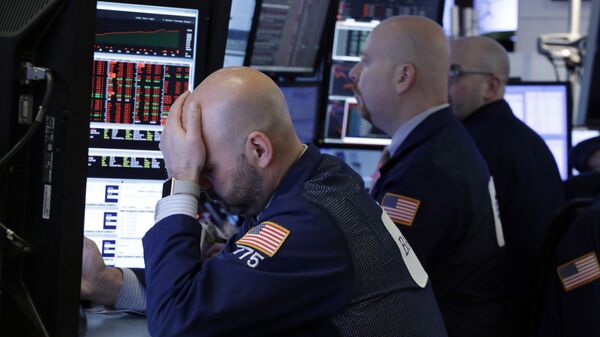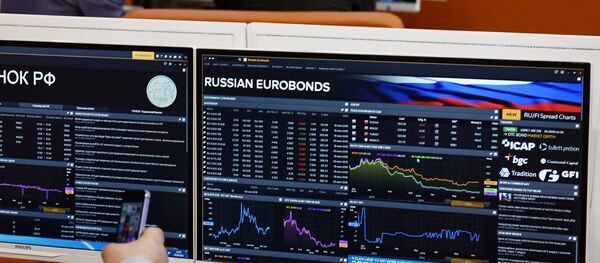Kristian Rouz — Both US investors and Federal Reserve officials are sounding the alarm over the inverted yield curve, or a discrepancy between the profitability of long-term and short-term debt securities. This comes as for the first time in many years longer-maturity US bonds have a lower yield than short-term securities of the same credit rating.
Earlier this week, the spread between US Treasury bonds from five to 30-year maturity narrowed to its narrowest point since 2007, sending shockwaves across US financial markets. Over the past several decades, the yield curve has inverted 17 times, and each time the US economy plunged into a period of at least two consecutive quarters of contraction.
"The Fed is going to be very sensitive to the shape of the yield curve," Katherine Renfrew of TIAA Investments said. "If we get to the point where inversion might begin to happen, the Fed may put the brakes on further dialling back monetary stimulus."
Although a recession is deemed an unlikely development at this point, the inverting yield curve is puzzling both investors and policymakers. The US economy appears to be gaining momentum amidst strong macro fundamentals — such as low unemployment, solid consumer demand, and an across-the-board expansion in manufacturing and services.
READ MORE: Finance Minister Reveals Plan B If Western Investors Quit Russian Bonds
Against such a backdrop, some say the inverted yield curve might be the result of a Fed policy mistake. Despite the US central bank having undertaken only five quarter-percent interest rate hikes since December 2015, the Fed has also started to cut its bonds portfolio by selling tens-of-billions-worth of bonds.
Some experts say this could be an equivalent to at least nine interest rate hikes over the same period, suggesting the Fed's silent monetary tightening is happening at a more aggressive pace than it appears to be at first glance.
"A potential curve inversion should be taken as seriously as always," a group of Citigroup analysts wrote in a recent report. "The historical relationship between the curve and implied recession probabilities is highly non-linear: implied probabilities grow very fast when the curve moves into inverted territory."
On the other hand, the persistently low long-term bond yields are explained by the still-high face value of 30-year Treasury bonds, hampering US natural interest rates, and possibly capping the ceiling for the Fed's interest rate hikes.
This despite President Trump's fiscal accommodation meant to suppress the investment appeal of longer-term bonds, as investors now have more lucrative opportunities in the non-financial sector. However, herein lies the problem — an influx of international capital into long-term US government bonds has accelerated amidst the rise of global instability driven by the China trade dispute, and the political risks emanating from the Middle East.
"When the Fed is in a tightening cycle, and markets lose confidence in the economic outlook," an inverted yield curve is "a powerful signal of recessions," incoming New York Fed President John Williams said.
Fed officials insist the central bank must continue with its policy tightening, as the yield curve might capsize into a full inversion if the Fed decides to postpone its further rate hikes. This comes amidst the assumptions that the US economy might be overheating due to the high stock and real estate asset prices.
READ MORE: 'Friends Never Say Goodbye': German Finance Minister Scholz on Brexit
In such circumstances, a more aggressive pace of deregulation could help defuse recession concerns. By providing additional investment opportunities, the federal government could encourage even more domestic investors to allocate capital into non-financial or at least non-debt-related financial assets.
As for the foreign purchases of Treasury bonds, the most radical response would be capital controls, which is hardly possible in an open-market environment. Another solution could be a flash dollar devaluation, which could reverse the international flows of capital into the US' favor.





